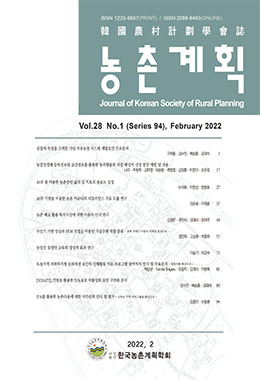Crop classification is very important for estimating crop yield and figuring out accurate cultivation area. The purpose of this study is to classify crops harvested in fall in Idam-ri, Goesan-gun, Chungcheongbuk-do by using unmanned aerial vehicle (UAV) images and support vector machine (SVM) model. The study proceeded in the order of image acquisition, variable extraction, model building, and evaluation. First, RGB and multispectral image were acquired on September 13, 2021. Independent variables which were applied to Farm-Map, consisted gray level co-occurrence matrix (GLCM)-based texture characteristics by using RGB images, and multispectral reflectance data. The crop classification model was built using texture characteristics and reflectance data, and finally, accuracy evaluation was performed using the error matrix. As a result of the study, the classification model consisted of four types to compare the classification accuracy according to the combination of independent variables. The result of four types of model analysis, recursive feature elimination (RFE) model showed the highest accuracy with an overall accuracy (OA) of 88.64%, Kappa coefficient of 0.84. UAV-based RGB and multispectral images effectively classified cabbage, rice and soybean when the SVM model was applied. The results of this study provided capacity usefully in classifying crops using single-period images. These technologies are expected to improve the accuracy and efficiency of crop cultivation area surveys by supplementing additional data learning, and to provide basic data for estimating crop yields.




